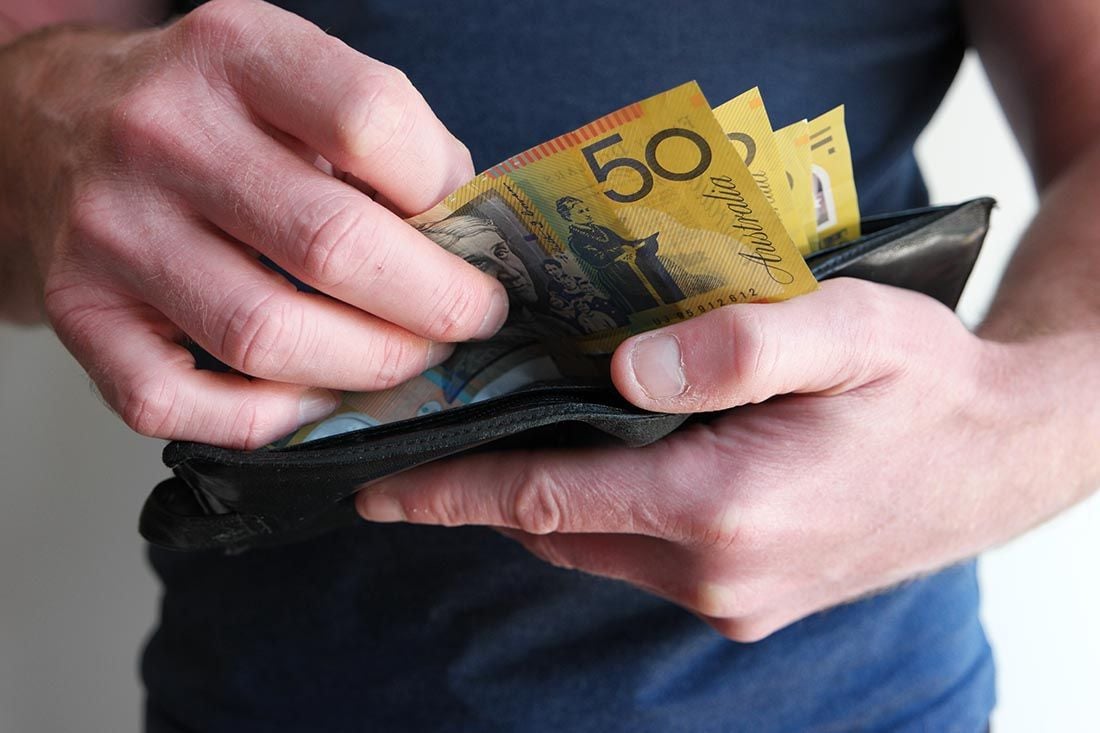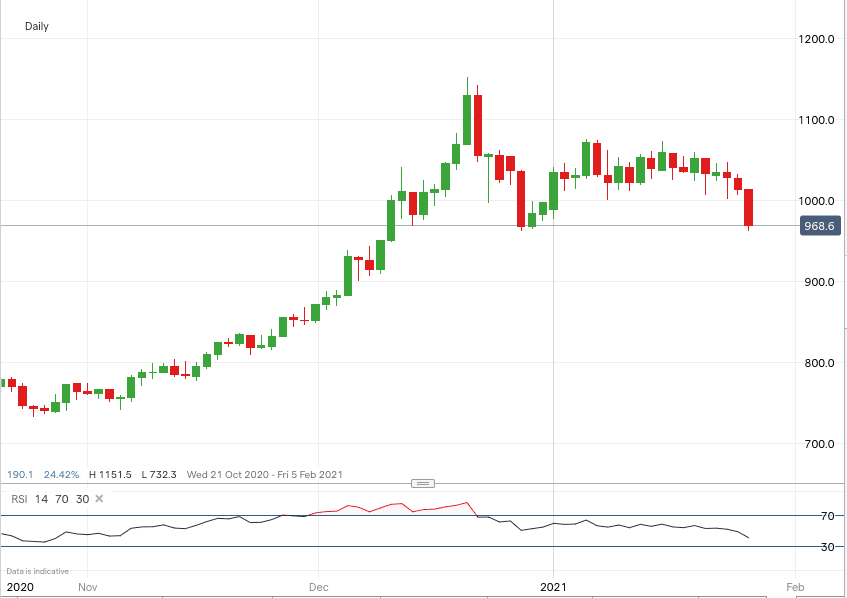Pound-Australian Dollar Rises Over a Percent on Iron Ore Price Slump
- AUD lags amidst poor investor sentiment
- Iron ore prices down sharply
- GBP/AUD rally extends
- But AUD woes might only be temporary

Image © Adobe Stock
- GBP/AUD spot at publication: 1.7950
- Bank transfer rates (indicative guide): 1.7320-1.7470
- FX specialist transfer rates (indicative): 1.7520-1.7800
- More information on indicative rates, here
The Pound-to-Australian Dollar exchange rate (GBP/AUD) has rallied by over a percent already this week, with gains accelerating through Wednesday and Thursday amidst a sharp drop in global equity and commodity prices.
The Australian Dollar fell against Sterling, Euro, Dollar and other developed market currencies in sympathy with a decline in iron ore prices, confirming the importance of this commodity to overall AUD valuations.
"AUD is underperforming most major currencies and AUD/USD fell under 0.7600 on lower iron ore prices. Iron ore prices on the Singapore exchange plunged by over 5% overnight, erasing its year‑to‑date rally," says Elias Haddad, Senior Currency Strategist at CBA.
The GBP/AUD rate is quoted 1.20% higher this week at 1.7932 while the EUR/AUD exchange rate is down 0.90% this week at 1.5912.
"The pullback in iron ore prices is driven by a material decline in Chinese steel mill margins and expectations for lower steel demand from China. China’s Ministry of Industry and Information Technology vowed to cut crude steel output in 2021 compared to 2020," says Haddad.
Above: Iron ore prices as quoted by IG.
But the declines in iron ore prices are not necessarily related exclusively to Chinese market dynamics as we are seeing the majority of basic metals turn softer, implying a generalised global trend is at play. Commodities, stocks and risk-associated financial products have all turned lower through the mid-week session and into Thursday owing to a major readjustment in investor risk sentiment.
"Stock markets have continued their run of losses from yesterday, as the market rally faces its first real test. For a global stock market that has enjoyed such solid gains since November such weakness should not be surprising, but as ever the speed of the drop has come as a surprise," says Chris Beauchamp, Chief Market Analyst at IG.
"Suffice to say that whether the short term direction of AUD is up or down is largely in the hands of risk sentiment, in which respect the negative correlation between the USD and the S&P 500 is almost as strong as the positive one is between the S&P and AUD," says Ray Attrill, Head of FX Strategy at NAB.
In sympathy with the turn lower in risk sentiment, high grade copper is quoted 1.4% lower, Nickel is down 1% while Aluminium is down 0.82. Liquified Natural Gas (LNG), another key Australian export is down 2.0%.
{wbamp-hide start} {wbamp-hide end}{wbamp-show start}{wbamp-show end}
The Australian Dollar is classed as a commodity currency as it derives much of its valuation from Australia's export of iron ore, coal, LNG and other basic raw materials. Declines in their prices will therefore have a knock-on effect on Australia's foreign currency earnings potential.
The near-term outlook for the Aussie therefore surely lies with how long the market's current sell-off extends.
Predicting how long the decline in sentiment and rise in volatility will continue for is tricky, given that market analysts have yet to put a finger on one single factor behind the sudden loss in value of stocks and commodities.
Indeed, there appears to be a combination of factors at play:
- macro economics, in particular a dawning realisation that a vaccine-lead recovery will be delayed by logistical challenges
- the Federal Reserve on Wednesday didn't offer up any explicit indications that it would provide further support to the economy
- earnings at major U.S. companies are in the 'OK' bracket
- the phenomenon of small retail traders boosting obscure and failing companies in order to profit on the burning out of institutional short bets held in those companies. Some suggestions are this is forcing hedge funds to not only reduce short positions in companies, but also reduce positions elsewhere to pare back risk exposure.
Regarding the latter, "while the activity of a small distressed gaming retailer in the US should not have a significant impact on the rest of the world there we believe the situation is causing hedge funds and their funders to go ‘risk-off’ and deleverage their investments causing funds to liquidate positions across the board," says analyst John Meyer at brokerage SP Angel.
Therefore a number of issues are at play, but nothing game changing is seen on the radar for the broader, multi-month horizon.
Indeed, the view that 2021 will deliver a more sustainable recovery is intact, largely supported by generous central banks, a recovering China and the progression of global vaccination programmes.
Therefore, Australian Dollar weakness might be viewed as short-term development, and a broader trend of appreciation can extend at some point in coming months.
"Barring a much deeper or protracted risk sell-off, it is commodity prices relevant to Australia that provides the key underpinning for the AUD rally in the latter half of 2020," says Attrill, "Australia’s terms of trade is already consistent with higher AUD levels."






